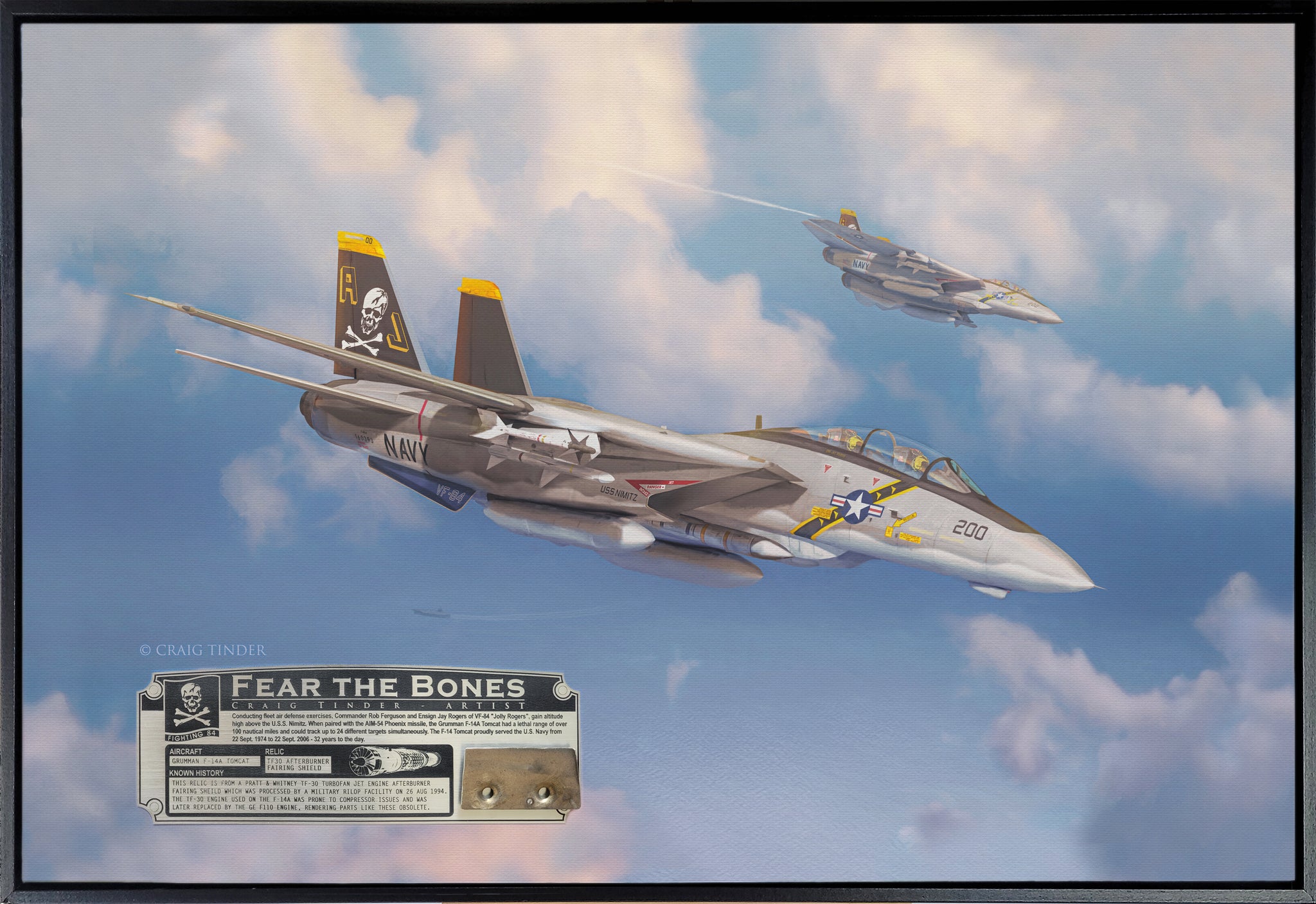










F-14 Tomcat - Fear the Bones Canvas | INCLUDES: Turbofan Jet Engine Fragment

F-14 Tomcat - Fear the Bones Canvas | INCLUDES: Turbofan Jet Engine Fragment
If you have any questions, you are always welcome to contact us. We'll get back to you as soon as possible, within 24 hours on weekdays.
Shipping Information
Use this text to answer questions in as much detail as possible for your customers.
Customer Support
Use this text to answer questions in as much detail as possible for your customers.
FAQ’s
Use this text to answer questions in as much detail as possible for your customers.
Contact Us
Use this text to answer questions in as much detail as possible for your customers.
Description
About the Relic & Process
This relic is an authentic fragment from a Pratt & Whitney TF-30 turbofan jet engine, which powered the early F-14A models of the iconic Tomcat. Known for its high-heat tolerance, this particular fragment is made from a nickel-alloy and comes from the afterburner's fairing shield, a critical component designed to withstand the extreme temperatures generated during supersonic flight and afterburner use. The TF-30 engine was an integral part of the F-14A’s initial design, providing the thrust needed for the Tomcat's impressive speed and maneuverability. However, it had its shortcomings, most notably its susceptibility to compressor stalls during high-acceleration maneuvers, which sometimes hindered the aircraft's performance in combat.
*Note for International Customers: Unfortunately, any relics from this aircraft (even in fragment form) are not allowed to be exported outside of the United States. F-14A Tomcat relic mounted onto canvas artwork
F-14A Tomcat relic mounted onto canvas artwork
Despite its issues, the TF-30 played a significant role in the early operational years of the F-14 Tomcat, seeing action throughout the 1970s and 1980s. By the 1990s, advancements in engine technology led to the replacement of the TF-30 with the more reliable and powerful General Electric F110 engine, significantly improving the Tomcat’s performance and reliability. These components, processed for disposal in 1994, represents a bygone era in aviation history where cutting-edge technology faced rapid evolution.
 Photo highlighting TF-30 Afterburner Fairing Shield, which is the piece of relic included in the "Fear the Bones" limited edition prints
Photo highlighting TF-30 Afterburner Fairing Shield, which is the piece of relic included in the "Fear the Bones" limited edition prints
The TF-30 engine, though eventually deemed inadequate, was a stepping stone in the development of superior jet propulsion systems and contributed to the success of the Tomcat. This rare fragment is no longer airworthy, making it a unique collector’s item for enthusiasts of naval aviation and military technology - sorry, these parts can't be shipped outside of the United States. Artist, Craig Tinder, holding the piece of afterburner fairing shield from an F-14 Tomcat
Artist, Craig Tinder, holding the piece of afterburner fairing shield from an F-14 Tomcat
Disclaimer
By purchasing from Aces In Action, you acknowledge that the product may vary slightly from the images on our website. We use authentic materials from military vehicles and relics, which may contain potentially hazardous substances. These items are not intended for ingestion, inhalation, or use by children. Aces In Action is an independent company, unaffiliated with or endorsed by any other organization. All names, logos, and trademarks are the property of their respective owners and are used for identification only, in accordance with the Lanham Act. Their use does not imply any official endorsement.
